Mathieu Lemay
Continuous SpO2 Monitoring Using Reflectance Pulse Oximetry at the Wrist and Upper Arm During Overnight Sleep Apnea Recordings
May 27, 2025Abstract:Sleep apnea (SA) is a chronic sleep-related disorder consisting of repetitive pauses or restrictions in airflow during sleep and is known to be a risk factor for cerebro- and cardiovascular disease. It is generally diagnosed using polysomnography (PSG) recorded overnight in an in-lab setting at the hospital. This includes the measurement of blood oxygen saturation (SpO2), which exhibits fluctuations caused by SA events. In this paper, we investigate the accuracy and utility of reflectance pulse oximetry from a wearable device as a means to continuously monitor SpO2 during sleep. To this end, we analyzed data from a cohort of 134 patients with suspected SA undergoing overnight PSG and wearing the watch-like device at two measurement locations (upper arm and wrist). Our data show that standard requirements for pulse oximetry measurements are met at both measurement locations, with an accuracy (root mean squared error) of 1.9% at the upper arm and 3.2% at the wrist. With a rejection rate of 3.1%, the upper arm yielded better results in terms of data quality when compared to the wrist location which had 30.4% of data rejected.
Generative Pre-Trained Transformer for Cardiac Abnormality Detection
Oct 07, 2021
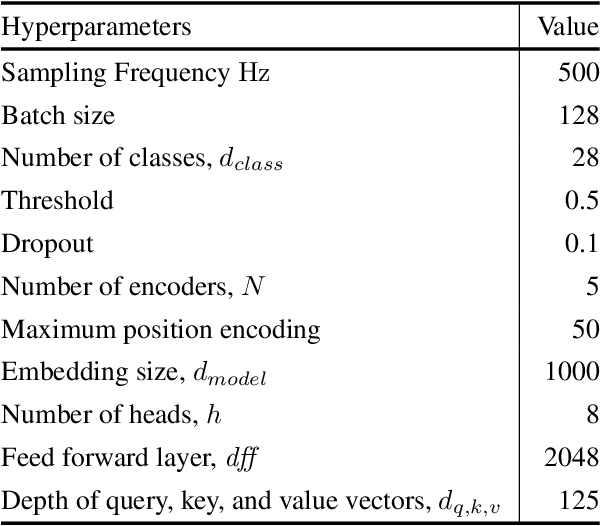
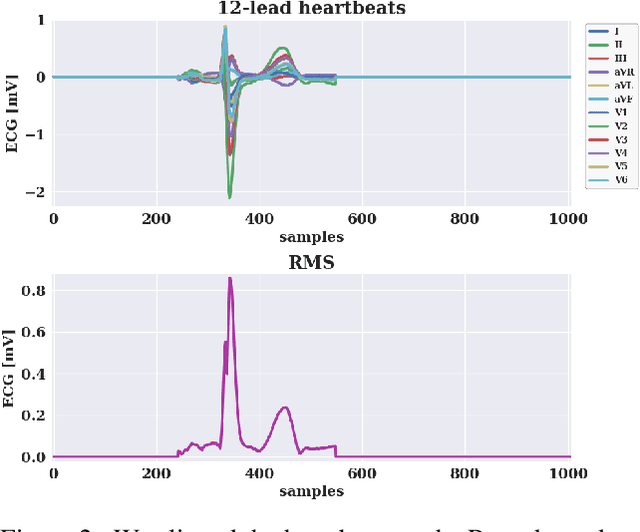

Abstract:ECG heartbeat classification plays a vital role in diagnosis of cardiac arrhythmia. The goal of the Physionet/CinC 2021 challenge was to accurately classify clinical diagnosis based on 12, 6, 4, 3 or 2-lead ECG recordings in order to aid doctors in the diagnoses of different heart conditions. Transformers have had great success in the field of natural language processing in the past years. Our team, CinCSEM, proposes to draw the parallel between text and periodic time series signals by viewing the repeated period as words and the whole signal as a sequence of such words. In this way, the attention mechanisms of the transformers can be applied to periodic time series signals. In our implementation, we follow the Transformer Encoder architecture, which combines several encoder layers followed by a dense layer with linear or sigmoid activation for generative pre-training or classification, respectively. The use case presented here is multi-label classification of heartbeat abnormalities of ECG recordings shared by the challenge. Our best entry, not exceeding the challenge's hardware limitations, achieved a score of 0.12, 0.07, 0.10, 0.10 and 0.07 on 12-lead, 6-lead, 4-lead, 3-lead and 2-lead test set respectively. Unfortunately, our team was unable to be ranked because of a missing pre-print.
ECG Classification with a Convolutional Recurrent Neural Network
Oct 06, 2020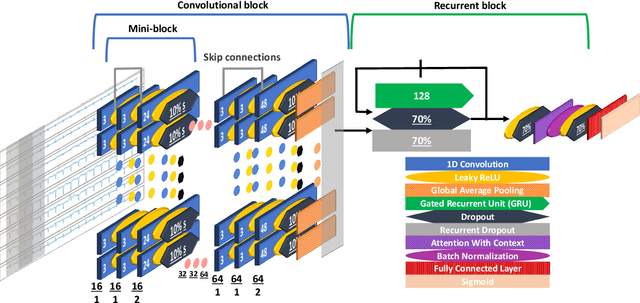
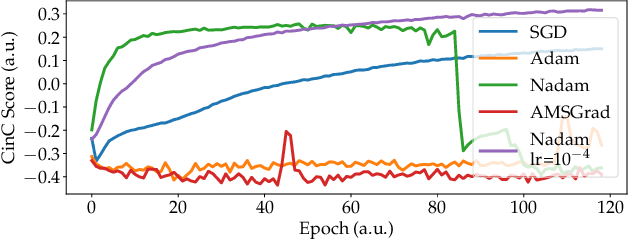
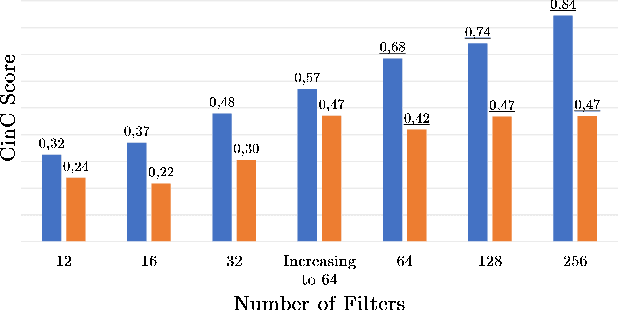
Abstract:We developed a convolutional recurrent neural network to classify 12-lead ECG signals for the challenge of PhysioNet/ Computing in Cardiology 2020 as team Pink Irish Hat. The model combines convolutional and recurrent layers, takes sliding windows of ECG signals as input and yields the probability of each class as output. The convolutional part extracts features from each sliding window. The bi-directional gated recurrent unit (GRU) layer and an attention layer aggregate these features from all windows into a single feature vector. Finally, a dense layer outputs class probabilities. The final decision is made using test time augmentation (TTA) and an optimized decision threshold. Several hyperparameters of our architecture were optimized, the most important of which turned out to be the choice of optimizer and the number of filters per convolutional layer. Our network achieved a challenge score of 0.511 on the hidden validation set and 0.167 on the full hidden test set, ranking us 23rd out of 41 in the official ranking.
Classification of Cardiac Arrhythmias from Single Lead ECG with a Convolutional Recurrent Neural Network
Jun 25, 2019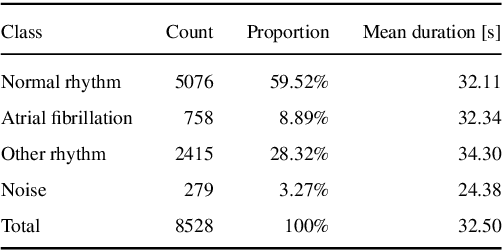
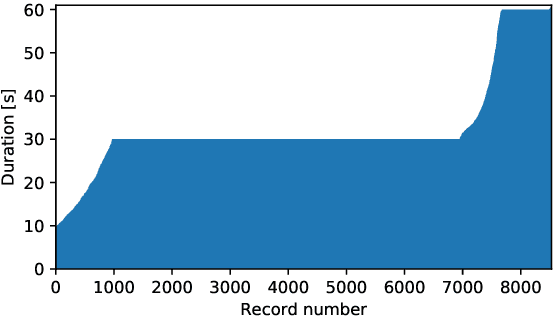
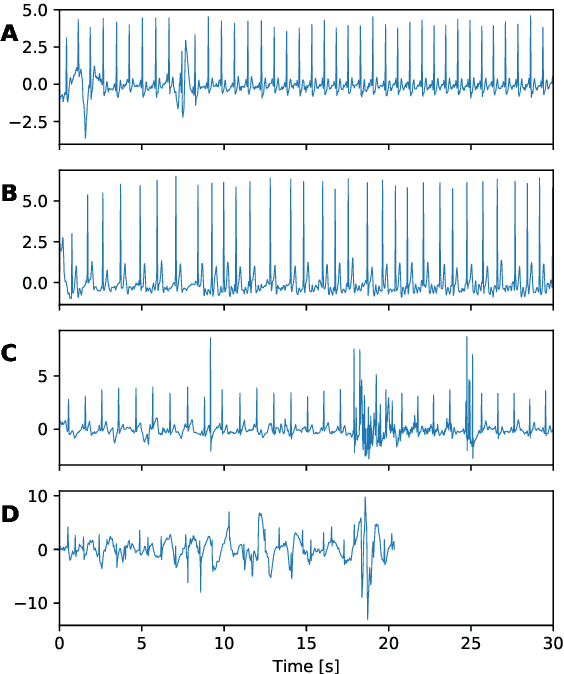
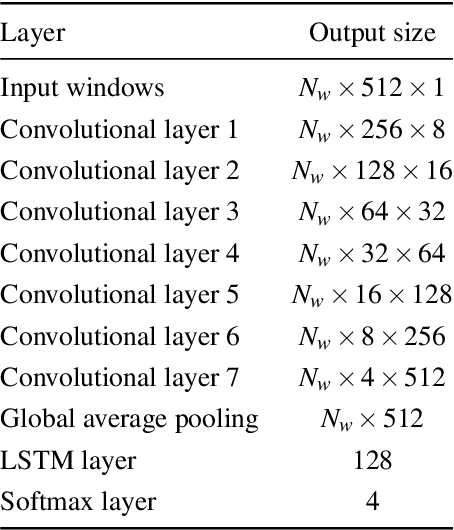
Abstract:While most heart arrhythmias are not immediately harmful, they can lead to severe complications. In particular, atrial fibrillation, the most common arrhythmia, is characterized by fast and irregular heart beats and increases the risk of suffering a stroke. To detect such abnormal heart conditions, we propose a system composed of two main parts: a smart vest with two cooperative sensors to collect ECG data and a neural network architecture to classify heart rhythms. The smart vest uses two dry bi-electrodes to record a single lead ECG signal. The biopotential signal is then streamed via a gateway to the cloud where a neural network detects and classifies the heart arrhythmias. We selected an architecture that combines convolutional and recurrent layers. The convolutional layers extract relevant features from sliding windows of ECG and the recurrent layer aggregates them for a final softmax layer that performs the classification. Our neural network achieves an accuracy of 87.50% on the dataset of the challenge of Computing in Cardiology 2017.
* Nominated to best paper award
 Add to Chrome
Add to Chrome Add to Firefox
Add to Firefox Add to Edge
Add to Edge